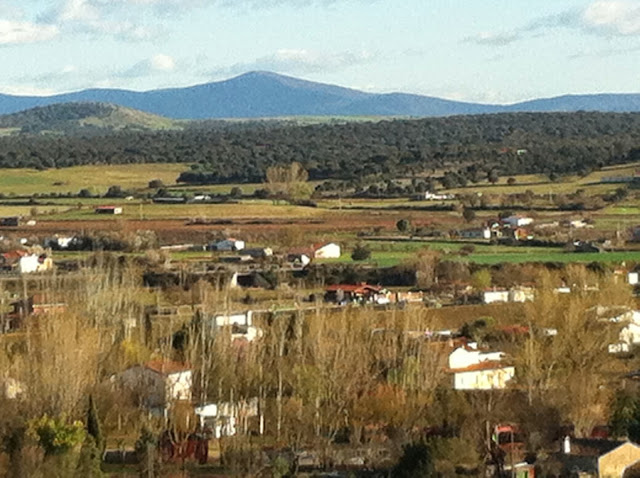I suppose the gist of what I was saying in the previous post is that what makes a place memorable is not the physical environment - but how you experience it. So far as cities are concerned this has a lot to so with social interaction. In some places you are forever destined to be an outsider - a wanderer, a dislocated observer. Often this is simply a case of cultural distance; when we visited Tokyo, or Hong Kong, then the social mores and cultural rituals were so non-European that it was inevitable that all we could do was observe from the sidelines. Sometimes places closer to home seem impenetrable, their pace or a self-possesed veneer render them inaccessible - Paris, London, Florence, Nice - all places I feel a little alienated by.
However other places invite you in as an honoured guest, where you step over the threshold of being a visitor, and are gifted a temporary belonging - Athens, New York, Napoli, Valencia, Marseille - all felt welcoming. Today, it was like that in Salamanca; here's why, it's about moments of unexpected intensity.
In Spain you can expect as a tourist to be more than occasionally irritated by beggars and wandering street musicians. Which are more annoying? The latter, I think. At least conversations with beggars tend to be short, if not sweet: they ask for money summoning up as much pathos as central casting can provide, we politely refuse, and that is that, apart from the occasional guilt pang that strikes you as a 'have' faced with a 'have not'.
The menace of buskers, especially the wandering minstrel variety, is more profound. Firstly they are inescapable, plonking themselves right by your table as you are trying to have a quiet couplish moment. Secondly they are persistent, clearly feeling that a full rendition of some execrable tune will be better rewarded than a snippet. Finally they are either entirely talentless, or have a gift for utterly mismatching instrument and music with the spirit of the place.
Star prize for this must go to the moderately talented solo saxophonist who ruined our visit to a cafe in Granada's lovely medieval centre with a pretty good pastiche of Coltrane inspired be-bop , which in its atonal improvisation, extreme register and enthusiasm for the un-melodic, must have persuaded the entire cafe that the chap was a tortured soul who deserved a euro or two, if not to reward his musicianship, then at least as a contribution to the cost of his therapy.
None of the above applies to the guitarist playing outside Salamanca cathedral. We had noticed him yesterday playing a variety of Spanish classical pieces. He was very good, exceptional even. Gill, who rarely goes beyond the loose change stage of reward put €1.50 in the hat. Big money for her in the busker stakes. Today he'd moved pitch to outside the main door. He was being roundly ignored by a small crowd that had gathered, who looked like it was waiting for something to happen. What occurred next was a small prelude to Salamanca's Holy Week events. A group of teenage girls arrived shouldering a flower-decked bier. Some older boys, in their late teens were with them, teaching them how to make the bier gently away as they walked. Suddenly a priest opened one of the big main doors of the cathedral and the girls started to walk gingerly towards the steps. At the time I was holding the camcorder on 'still' mode to take a photo.
I changed to video mode and framed the guitarist in the foreground with the little procession behind him. He was playing some jaunty little melody. As I pressed the start button he changed tune. Was he aware of the scene behind him, or was it mere serendipity that as the girls moved towards the portal the romantic and soulful opening chords of Concerto d' Aranjuez echoed quietly across the square? The girls and their flowery bier vanished into the darkness of the cathedral and the doors closed. I wanted to record more of the concerto, it was being played beautifully. Slowly I panned the camera across the ornately sculpted facade, briefly the sun reflected on the golden stone and the lens flared. I zoomed out to take some more video of the guitarist, passers-by wandered across the frame; he was still playing the haunting melody when finally I pressed stop. It had been one of those entrancing, intensive moments that stay with you forever. It's rare indeed, however, that you are left with a permanent record.






















































